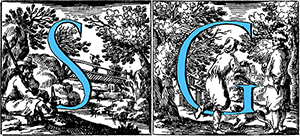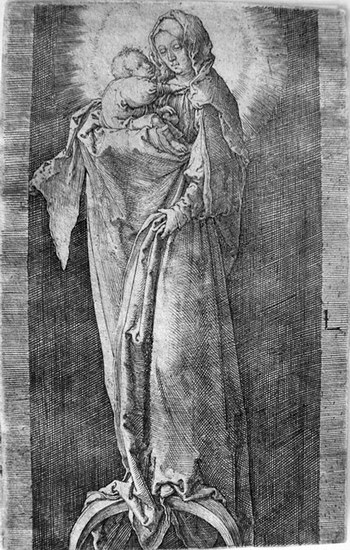
Van LEYDEN Lucas
(Leiden 1494 – 1533)
Dutch painter, draftsman and engraver, son of Marie Heynricxdr and of the painter Hugo Jacobsz, about whom we do not have any works signed or documented with certainty. Lucas Van Leyden is considered one of the most important Dutch painters and one of the most skilled and refined engravers in the history of this art.
After a short period spent in his father’s workshop he was a pupil of the goldsmith Cornelis Engelbrechtsz.
We do not know where he learned the techniques of engraving but we know for sure that from a very early age he had shown a notable inclination for this profession.
Already as a child he applied himself diligently to work with pencils, brushes and burin.
According to the information contained in the Book of Painting by Karol van Mander (1604) his first engraving ‘Muhammad and the monk Sergio’, was performed when the artist was just fourteen. This is a mature work both from the point of view of inspiration and technique. At sixteen she recorded ‘The milk woman’, perhaps the first ‘gender representation’ ; an artistic trend that will spread throughout Europe.
The inspirational source of Van Leyden’s work certainly remains the prints of Dürer, whom he met in Antwerp in 1521 and with whom he established friendship and collaboration. In 1522, by now rich and famous, he was enrolled in the Guild of Saint Luke of the Antwerp painters. Soon, however, the influence of J. Gossaert (called Mabuse), strongly inspired by Italian art, took over by pervading the last period of his artistic production.
In the etchings by Van Leyden there is the continuous research of the atmosphere, through an inexhaustible variety of gray ranges, obtained with very thin lines, the verticality of the figures, often dressed up according to the sumptuous costumes of the time. In his pictorial work his famous portraits (Brunswick Museum and National Gallery in London) show a close connection with Dürer’s portraiture. In the Madonna with Child and Donor (Alte Pinakothek of Monaco) and in the Last Judgment (Stedelijk Museum in Leiden) ) the Dürerian ways are almost exasperated.
Luca died in Leiden in 1533 with the conviction that he was poisoned by a painter envious of his fame.








